The Real Them
10/31/95, Rosemont, IL, Rosemont Horizon
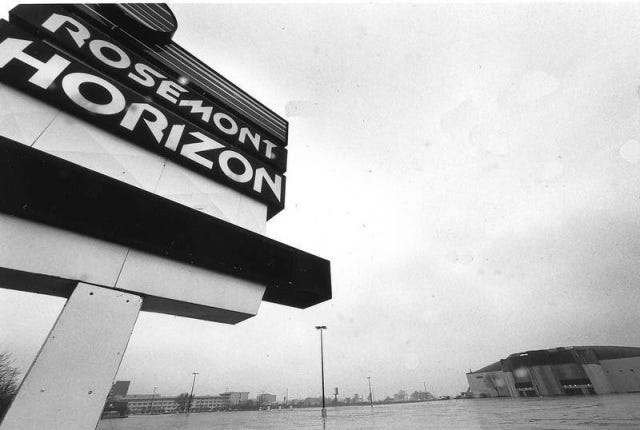
SET 1: Icculus, Divided Sky, Wilson > Ya Mar, Sparkle > Free, Guyute, Run Like an Antelope, Harpua
SET 2: I Am the Sea, The Real Me > Quadrophenia, Cut My Hair, The Punk Meets the Godfather, I'm One, The Dirty Jobs > Helpless Dancer, Is It In My Head?, I've Had Enough, 5:15, Sea and Sand, Drowned, Bell Boy, Doctor Jimmy > The Rock, Love, Reign O'er Me
SET 3: You Enjoy Myself, Jesus Just Left Chicago, A Day in the Life > Suzy Greenberg
ENCORE: My Generation
I. Assemble The Musicians
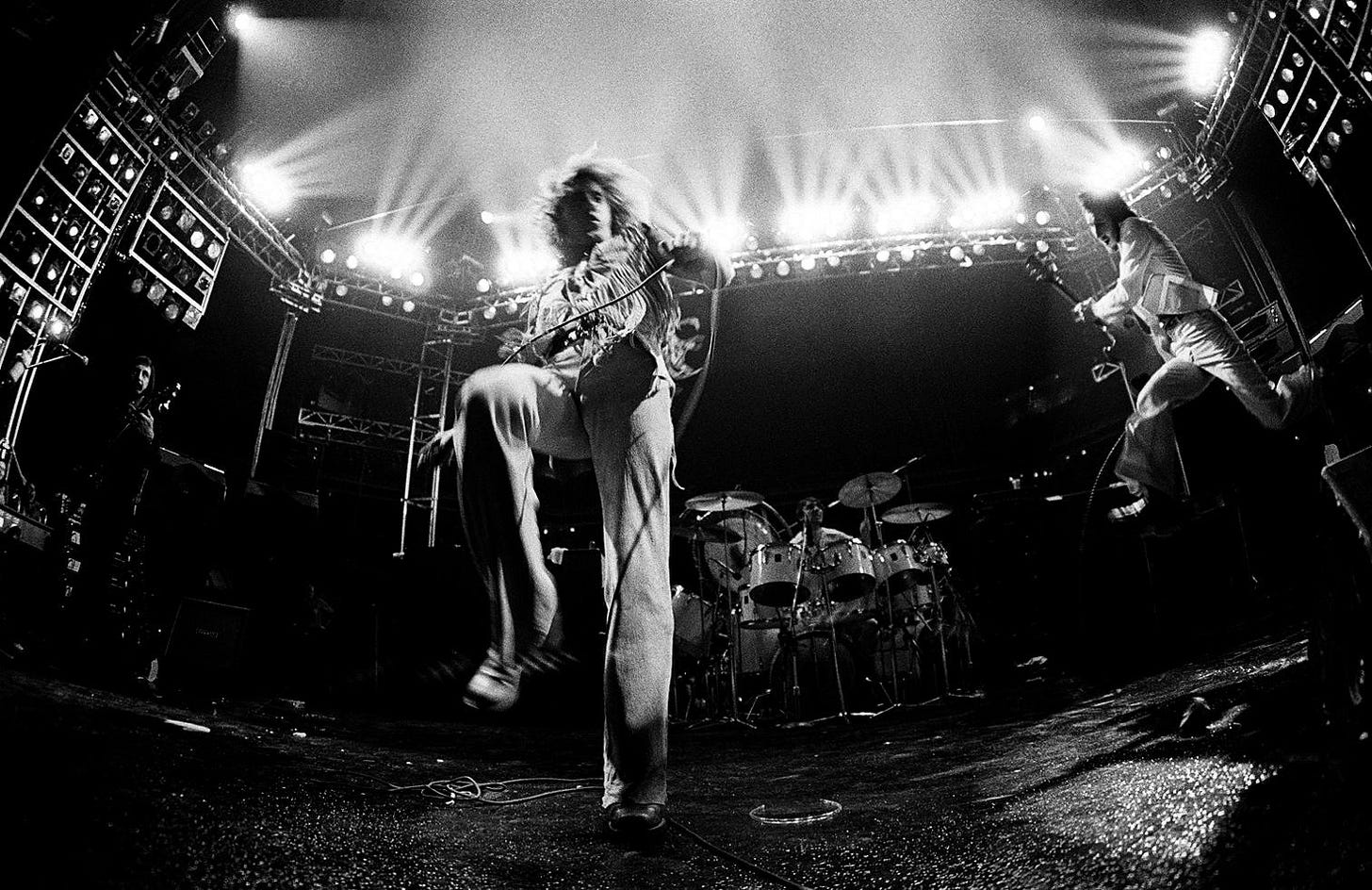
“Now we’d like to play for you the better part of an album what we wrote, about something that was very dear to us when we were little. It’s a story about a mod kid, and we call it Quadrophenia. It’s all four of us, it’s kind of an in-joke...it’s not just a looking back, it’s a kind of a bring it up to date. Quadrophenia’s about where we’re all at today.”
- Pete Townshend, Philadelphia Spectrum 1973
Quadrophenia is The Who’s collective autobiography. It explicitly references their early mod days as The High Numbers, it’s thick with imagery from the mid-60s Britain where the band formed and Pete Townshend’s memories of teenage angst. But it also attempts to create a complicated symbology through the main character Jimmy’s split personality, a four-way representation of the band itself: brash Roger, sensitive Pete, sullen John, raucous Keith. It’s the ultimate realization of Townshend treating The Who like an entity separate from himself, a rock n’ roll avatar for expressing small feelings in arena-size, painfully loud statements.
Narratively, it’s a coming-of-age tale, ending with the realization that nostalgia is a dead end. As Pete wrote in his original sketch:
“[Jimmy] goes through a series of temptations. He realizes what the four facets of his character bring out in him. The good, the bad, the romantic and the insane come together. His triumph is strange, he feels ecstatic to find all his parts combined. He is also sad to be nostalgic again, looking back. Something makes him want to get back into life.”
Last year, I wrote about how The White Album was the perfect choice for Phish to kick-off their new Halloween tradition, tying together several threads of where the band found themselves on the verge of a late 1994 musical breakthrough. They repeated the trick again in 1995 with The Who’s second rock opera, another unexpected and ambitious pick that transcended the gimmick to offer both a snapshot of the band’s current form and a mentor for their next stage. This time around, they studied at the knee of one of the most bombastic rock bands ever, receiving secondhand instruction in how to dominate the massive venues they now inhabit. But they also took the moral of the Quadrophenia storyline to heart: you can only go so far looking back, and you have to blow up the past to create the future.
II. The Book is Getting Its Ass Kicked!
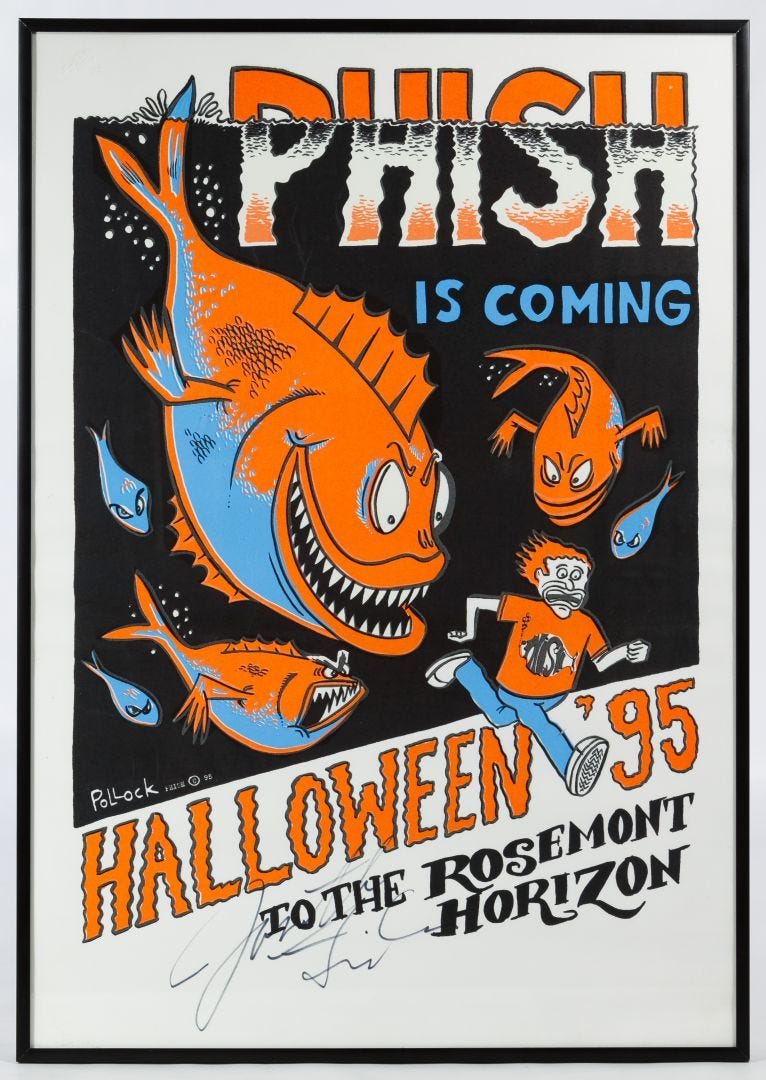
For a year that’s light on narration, the first set is thick with Phish lore. Cracking the book on Icculus for the first time in almost a year (and the last time for 4 years), Trey sets the night’s expectations for weirdness and evil spirits. The set-closing Harpua — 1995’s only complete version, and the last until the Clifford Ball — includes a fantastic Mike dream recap that is deeply unsettling, searing his delivery of “BABY RACOONS!?!?!” into my mind for 25 years and counting. Neither go deep into Gamehendge, with Harpua’s storytelling largely an excuse to squeeze in one last “Beat It” tease and tell their own story about a Jimmy, but the bookends are still a noteworthy return to the early mythology of Phish.
Phish fills the space between the story-songs with high-energy material, every tempo juiced by finally reaching the holiday at the tour’s halfway point. Everyone listens to the LivePhish SBD these days, for good reason (the Rosemont Horizon/Allstate Arena has never been known for acoustics or taping), but it’s worth sampling a couple first-set songs just to hear how incredibly AMPED the crowd was, even on a Tuesday night in strip-mall suburbia.
Phish feeds off that energy — there’s no sparkling Reba this year, but fierce versions of Divided Sky and Antelope and the return of Guyute, now in its final form, feed the crowd’s fire. And again, the emphasis is on yesteryear — the first four songs and the last two songs all debuted in the 80s, Mike references last year with “watch it, Rocky!” in his dream; it’s the Ghost of Halloween Past.
Similarly, The Who prologued the Quadrophenia portion of their sets in 1973-74 with a flurry of oldies, typically opening with their first single (“I Can’t Explain”) and running through both “Summertime Blues” and “My Generation.” It’s as though they were trying to put themselves back in the headspace of the young mods at the center of the rock opera they’re about to play, prepping themselves for time travel.
III. Is It Me, For A Moment?
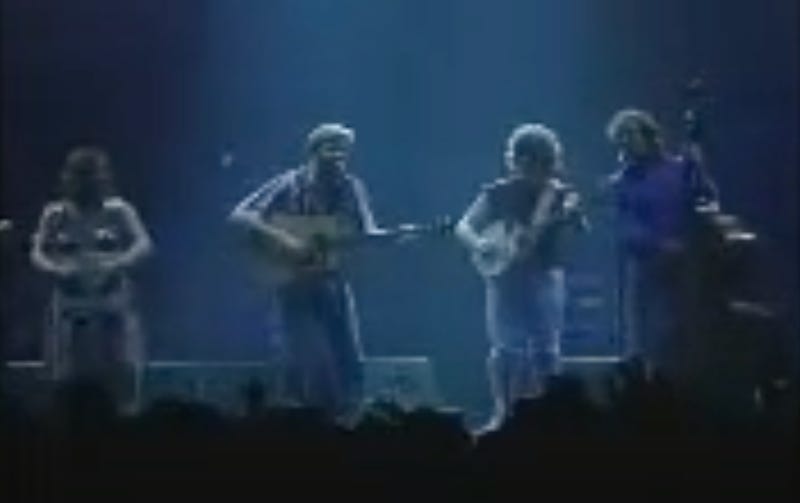
Let’s cut to the chase here: the Quadrophenia set is a mixed bag, the least of the 1.0 album covers, though admittedly that establishes a very high lower bound. It deserves a ton of credit just for being a huge swing: another double album, likely harder to play than The White Album even with 13 fewer songs to learn, and not a lazy choice from The Who catalog.
And Phish truly commits to the bit, recording their own versions of the album’s interstitial sound effects (including a cover of “The Kids Are Alright” I’d love to hear someday, if it exists in full) and the “I Am The Sea” soundbites, or recreating the Sousa march after “The Dirty Jobs” and the “Drowned” fade-out onstage. In its production values, including a full horn section, a guest “vocalist,” and (if you count the encore) props and pyro, it foreshadows the Broadway Phish productions of holiday shows in 3.0.
But Quadrophenia, an album that I love, is maybe not the best 90 minutes of music to perform on stage unabridged. It’s heavy — sonically and thematically, basically a prolonged contemplation of suicide. It’s a dense studio creation, coming from the deepest period of Townshend’s primitive synthesizer obsessions. Its story might be more direct than Tommy, but it’s still a bit of a head-scratcher unless you’re reading along with the liner notes, particularly for American listeners in the mid-90s.
Even The Who thought their double-album was a bit much to force their audience to sit through — the 73/74 tour omitted both the title track and its reprise “The Rock,” skipped most of Side B by jumping straight from “I’m One” to “5:15,” and added some explanatory narration (e.g. “Here's a song about a journey down to the sea...and to get there, he gets on...THE FIVE FIFTEEN!!") between songs. The Who infamously struggled with playing the album live, with the band vetoing Townshend’s plan to add a touring keyboardist and instead choosing to play awkwardly to backing tapes and click tracks.
That’s not a problem for Phish, they’ve got a keyboard player right over there! And it’s Page who shines brightest on this year’s costume (“Quadrophenia was as much a part of Page’s DNA as TheWhite Album was of mine,” Trey says in The Phish Book), adding the piano layers the originators lacked live and taking the lion’s share of the lead vocals as well. Page doing Daltrey isn’t an obvious choice, but it works great; he’s got the range to hit those notes, but gives the material a youthful sensitivity that the macho Daltrey lacks in the original, hewing closer to Townshend’s voice on the Quadrophenia demos released in 2011. It’s Trey who takes most of the Pete parts, while Mike and Fish each get their crack at a Daltrey epic. But for one night, it’s Page McConnell & Band, and it rules.
The reimagined vocal approach is the most drastic alteration Phish makes to an otherwise faithful recital, apart from some changes that feel more practical than anything. Two songs, “I’m One” and “Sea and Sand,” are given solo arrangements for Trey and Page respectively, and while both work well (particularly the latter), they also feel like a bit of a shortcut. “Helpless Dancer” is merely sketched out, understandably rushed through and mumbled; lots of lines in there I’d rather not hear them sing. “I’ve Had Enough” cleverly attempts to incorporate their current bluegrass setup into the hootenanny parts, but the logistical difficulties of switching back and forth keep them on acoustic instruments for the second half of a song that should be the show-stopper finale of the first act.
But the real impact of Quadrophenia on Phish isn’t really in the sheet music, but the delivery. Back to The Phish Book:
“The dynamics The Who worked were all at the high-end of the energy-output spectrum,” said Fish. “I’ve never been more physically drained than after the Quadrophenia set.”
“The funny thing about Quadrophenia is that I didn’t consider it that great an album even after our dress rehearsal. But it totally clicked for me as an arena masterpiece when we played it for a real audience,” Trey said.
The steadily-growing intensity of this tour has been a main narrative of this tour’s essays, and the performance of Quadrophenia is best understood as a tipping point. Practicing the album has no doubt contributed to the ferocity of the last couple weeks of “normal” shows, but as Trey says, the combustible mixture of the material, the venue, and the crowd is the true spark of inspiration. Tonight, Phish plays “The Real Me” and “Drowned” even faster than The Who (possibly to the songs’ detriment), and they’ll only be loonier when they return a couple months down the line. The far more treasured second leg of Fall 95 is known for its explosiveness, and Phish’s Halloween costume lit the fuse.
IV. Everybody Knows Wookies Can’t Play Chess

As I mentioned the other day, there’s no follow-up show to get that post-Halloween bump; after tonight, the band gets a much needed week off before rebooting in Atlanta. So all the post-exam giddiness gets concentrated into the third set of the night, or even to its first 40 minutes: the longest-ever You Enjoy Myself.
It’s tempting to consider this jam as a direct precursor to the rest of Fall 95, especially with some other major YEMs on the horizon, but I don’t think it quite fits. The first segment of the jam definitely has that intensity I was just talking about (c.f. the 14th minute, phew!), but the rest of the extended improvisation plays out less like Albany than a Summer 95 jam, in the multi-staged spirit of the Mud Island or Finger Lakes Tweezers. It’s all the pent-up energy of a band that’s been putting in long hours learning another band’s songs in the practice room finally allowed to just play, with the fingerprints of their mid-month collaborations with Medeski Martin & Wood still visible.
Once again, the spirit here is more important than the literal music; it’s a very good jam, but not exceptional apart from its length. For whatever reason, Phish has pulled back hard in early fall on the record-shattering improvisations of the summer, only going long when guests are around. Allowing YEM to take its sweet time — it’s 2/3rds of the set! — and roam well free of its usual structure (you can hear them feinting at the vocal jam around the 20th minute before they zoom past for another 13 minutes of instrumental jamming), announces the return of longform improv, if at lower frequency than the summer tour. After just two super-size jams in the first leg of fall (this one and the 10/17 freeform experiment with MMW), the second leg will sport 8 that pass the 20/30-minute barrier. Combine that exploration with the intensity inherited from The Who, and take cover.
Fittingly for that combustible mixture, the show ends with a literal explosion, a deep rock nerd reference to Keith Moon’s prank gone wrong on the Smothers Brothers show in 1967. Trey and Fish’s stage destruction (while Mike and Page hilariously putter along on banjo and upright bass) actually feels ever so slightly too real, a savage catharsis worthy of a mod-rocker street battle. Reading between the lines of the quotes up above, it sounds like learning and playing Quadrophenia wasn’t the smoothest experience, and the tour so far has had its share of frustrating ups and downs. To move forward, Phish doesn’t need to explode the past — that symbolism feels a touch extreme. But like Jimmy realizes on the rock, clinging to nostalgia can only hold you back. It’s time to evolve.
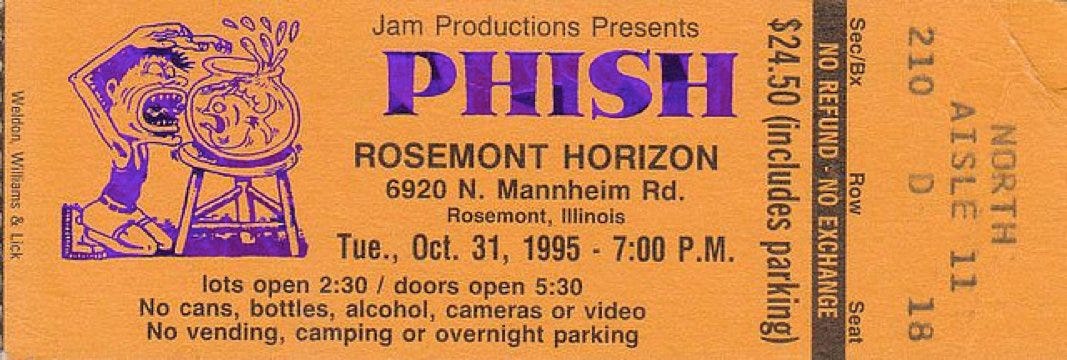
Postscript:
“Someone told me that they read in an interview with Pete Townshend where they’d heard that we – I don’t know if he’s ever heard of Phish or even gives a shit – but that he heard some band in America had covered Quadrophenia and it was a big date in America,” Fishman told Relix in 2013. “It sold a lot of tickets and a bunch of people went to the show of Quadrophenia and what do you think of this band covering Quadrophenia and his response was negative. Like, ‘No one plays The Who like The Who! Fuck them!’ Which I thought was just right on. Like The Who would just be pissed that we would go out and put a production of Quadrophenia and that his answer to it was like, ‘Fuck those guys in America, we’re going to do it right.’”
The Who revived Quadrophenia themselves in 1996, first in a Hyde Park charity set filled with bonkers guests (one song features Gary Glitter and the guy who played Vyv on The Young Ones) and a subsequent tour of the US. They’d also tour it again in 2012, a tour that brought them, oddly enough, to the Rosemont Horizon.
[Stub from Golgi Project. Hello to that late 90s PTBM style!]

Fantastic work on this Rob!